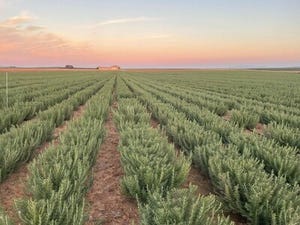ADM delivers solid Q4 2019 results
CEO talks China, ASF and progressive shift towards more professionalized farming.

Archer Daniels Midland (ADM) delivered a solid fourth quarter, consistent with its expectations three months ago, ADM chairman and chief executive officer Juan Luciano said upon release of the company’s fourth-quarter 2019 financial results.
“At the end of 2019, we can look back on a full year in which the team did a great job managing through some difficult external conditions while continuing to deliver innovative solutions for our customers,” he said.
Net earnings during the last quarter of 2019 were $504 million, up from $315 million in the fourth quarter of 2018. Adjusted earnings per share was $1.42, up from 88 cents the prior year.
According to the results, the company’s Ag Services & Oilseeds segment results were higher year over year and included approximately $270 million net operating profit impact from the passage of the biodiesel tax credit (BTC) for 2018 and 2019. However, ADM relayed that Ag Services results were slightly lower year over year do to the delayed U.S. harvest, which contributed to lower export volumes and correspondingly lower margins. This was partially offset by South America results, which ADM said benefited from improved margins driven by good export demand and farmer selling.
In Crushing, margins overall remained solid, although substantially lower than the near-record levels last year caused by the short 2018 Argentine soybean crop. Negative timing impacts this quarter versus positive timing impacts in the prior-year quarter also contributed to lower year-over-year results.
The company reported that Animal Nutrition results were up substantially versus the prior-year period. Neovia continued to contribute positively to results, partially offset by continued losses in lysine due to a weak global pricing environment. During an earnings call, executive vice president and chief financial officer Ray Young said 2019 was “an impressive year of growth” for nutrition, and that growth is expected to continue in 2020.
“For the first quarter, we anticipate overall nutrition segment results will be substantially higher than the first quarter of 2019, with growth in operating profit at around 20%,” he said.
WFSI results were significantly higher than the prior-year quarter. Strong sales and margins for WILD in North America, EMEAI and APAC drove results for the quarter. In Specialty Ingredients, lower sales volumes and margins in emulsifiers and reduced margins in edible beans were partially offset by continued margin growth in proteins. Health & Wellness results benefited from a new strategic agreement for ADM fermentation capacity.
Looking ahead, Luciano said the company is excited about opportunities in 2020 and beyond.
“Our industry-leading array of products and solutions from nature is helping us give our customers an edge in meeting global demand in fast-growing consumer trend areas — from alternative proteins to foods and beverages that enhance health to unique products for pets,” he said.
Further, Luciano said market conditions are expected to improve as the year progresses, particularly as impacts from the U.S.-China phase one trade deal take hold.
“More importantly, another year of expected 20-plus percent growth in Nutrition profitability -- combined with our work to improve business performance, advance Readiness and harvest our growth investments -- give us confidence in strong results in 2020 and the years to come,” he said.
Chinese demand
Regarding China and African swine fever, Luciano said the worst is probably over, with a total protein gap of about 20 million tons being filled mostly with imports. Brazil has been very aggressive filling up those imports, he said, adding that crush margins have shown the impact of that.
Further, Luciano relayed that ADM has seen China react with more chicken and aquaculture production, which has affected crush margins.
The company also expects to see an impact from U.S. exports in the region as well now with the phase one trade agreement between China and the U.S. in place.
“So, we see a progressive shift in the industry in China towards more professionalized farming in that regard, and that used more soybean meal,” Luciano said, adding that this is viewed positively.
Recovery is expected in 2021, while 2022 will become normal, but “the new normal will be slightly different,” he said.
About the Author(s)
You May Also Like





